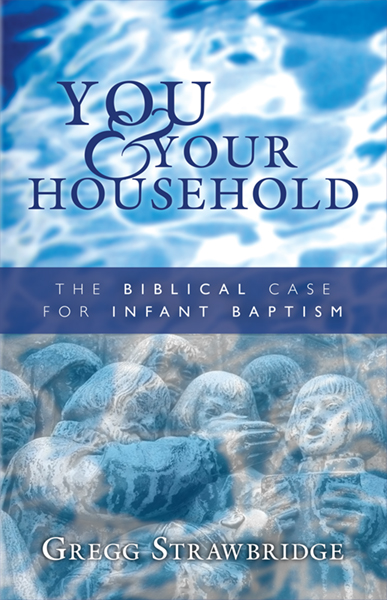Podcast: Play in new window | Download (7.9MB)
Subscribe: Apple Podcasts | RSS
December 7th is the day set aside on the Church Calendar to remember St. Ambrose, Bishop of Milan.
Ambrose of Milan
 While men like St. Athanasius defended the faith at the Council of Nicaea, the real work restoring orthodoxy throughout the empire required local hands. While the Church had clearly spoken and declared that arianism was heresy, many of the bishops installed around the world remained loyal to arianism. As Rev. Steve Wilkins often says, “heretics don’t listen to church councils.” The labors of the council would be for not if Christ did not raise up men in local jurisdictions to protect the word and church. One such man who would serve as a protector of the church against all such heresies was St. Ambrose, the Bishop of Milan.
While men like St. Athanasius defended the faith at the Council of Nicaea, the real work restoring orthodoxy throughout the empire required local hands. While the Church had clearly spoken and declared that arianism was heresy, many of the bishops installed around the world remained loyal to arianism. As Rev. Steve Wilkins often says, “heretics don’t listen to church councils.” The labors of the council would be for not if Christ did not raise up men in local jurisdictions to protect the word and church. One such man who would serve as a protector of the church against all such heresies was St. Ambrose, the Bishop of Milan.
Contemporary with the fourth century councils, St. Ambrose rose to the rank of Roman governor over the region of Liguria and Emelia. Titled the “Consular Prefect” Ambrose was headquartered in Milan, the functional capital of the western Roman empire. In such an influential seat, Ambrose had the attention and recognition of the emperors.
St. Ambrose the Proto-Kuyperian
The cornerstone of the Kuyperian worldview is the principle of sphere sovereignty, the idea that God has ordained the institutions around us (e.g. Church, State, Family) and given them limited authority and responsibilities. These spheres work together like cogwheels as God expresses his will through the created order. Ambrose himself set many of the sphere boundaries that will later be embraced by Kuyperian systems.
During Ambrose’s tenure as governor, Milan’s episcopal seat was maintained by an Arian Bishop. When he died, both factions of the Church sought to place their own man in the vacant seat. Recognizing that his place was a servant of the public, not a member of the clergy, Ambrose refused to take a side. Instead he made a plea for peace between the two parties and urged the people of Milan to choose a new bishop without violence. While Ambrose could have easily called down the power of the state to squash Arianism, he recognized that such an act would have been outside his office’s legitimate authority and purpose.
The people of Milan then did the unthinkable – they demanded the unbaptized Roman governor as their new Bishop. Ambrose fled to plead with the Emperor for any excuse out from under the miter. Having no imperial sympathies, Ambrose was baptized and finally succumbed to episcopal consecration on this day (December 7) in 375 AD.
Continuing in the proto-kuyperian theme, Ambrose recognized that in this new sphere of the state, his worldly titles and wealth would be an hindrance to the proper function as the overseer of Milan. Ambrose disposed of his worldly wealth by giving it to the poor and the church. All his silver and gold, his lands and estates were given away as he sought to focus himself on the ministry. Overnight, the once powerful Roman governor becomes Victor Hugo’s “Monseigneur Bienvenu.” His consistency alone is worthy of our admiration.
Bishop Ambrose vs the Emperors
As bishop, Ambrose was at liberty to take on the arian heresy and his efforts proved quite successful. They were, however, noticed as the Arian empress Justina maneuvered the child regent Valentinian II against his efforts. The emperor began to make laws showing lenience toward the arians and ordered Ambrose to give up two of his churches in Milan for arian use. Ambrose refused and upon being summoned to Valentian’s court was able to successfully defend his position.
Milan is then absorbed into Theodosius’s empire as he defends Valentinian II against the conquest of Magnus Maximus. Valentinian II continues to pressure Ambrose to provide for the arians and demands the Portian basilica. Ambrose responds by having his parishioners barricade themselves inside the basillica until the order is rescinded. Ambrose continues to maintain sovereignty of the church refusing to bow to the state’s demands of religious tolerance.
Ambrose’s civil disobedience is most famous in his excommunication of Emperor Theodosius, who oversaw the brutal massacre of 7,000 people in the city of Thessalonica. Ambrose refused the emperor access to the Lord’s table and demanded repentance. Ambrose is said to have met Theodosius at the door of the Church and said,
“It seems, sir, that you do not yet rightly apprehend the enormity of the massacre lately committed. Let not the splendour of your purple robes hinder you from being acquainted with the infirmities of that body which they cover. You are of the same mould with those subjects which you govern; and there is one common Lord and Emperor of the world. With what eyes will you behold his temple? With what feet will you tread his sanctuary? How will you lift up to him in prayer those hands which are still stained with blood unjustly spilt? Depart, therefore, and attempt not, by a second offence, to aggravate your former crime; but quietly take the yoke upon you which the Lord has appointed for you. It is sharp, but it is medicinal and conducive to your health.” (Rev. Alban Butler (1711–73). Volume XII: December. The Lives of the Saints. 1866.)
Ambrose gives the emperor eight months of penance, which he submits to from his palace.
The Legacy of St. Ambrose
St. Ambrose’s ministry serves to solidify the victory of trinitarian orthodoxy and serves as an example of what the proper relationship between church and state looks like. He was influential among emperors and loved by his people. In addition to his contributions as a bishop, he went on to write hymns and is traditionally credited with the hymn Te Deum, which is said to have been composed when he baptized St. Augustine. Ambrose is a champion of the faith and a worthy name to add to your family’s baby names list.
 <>
<>
















